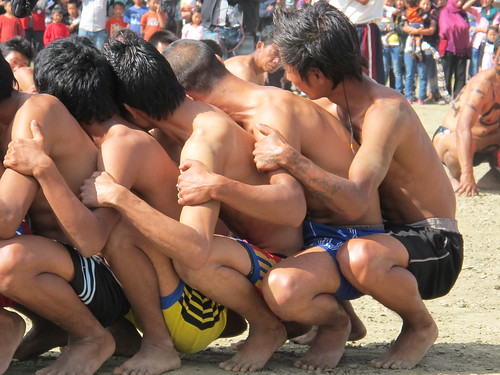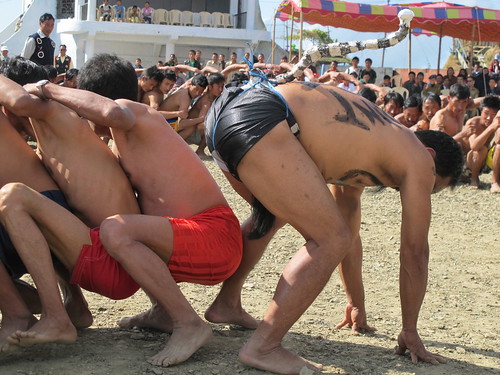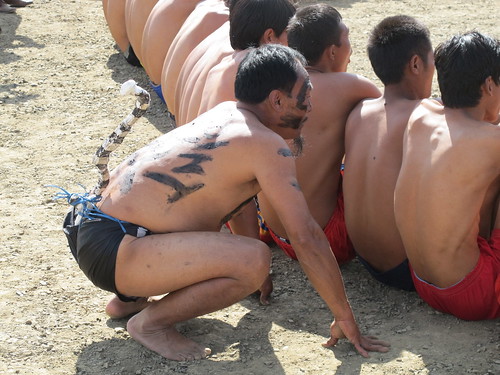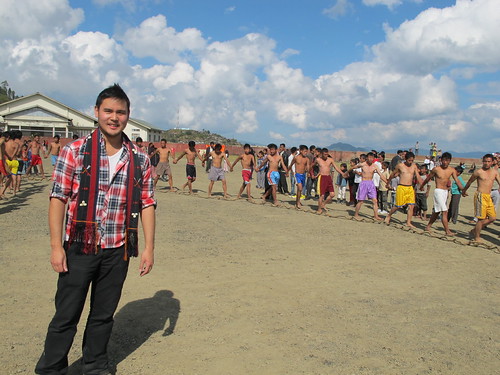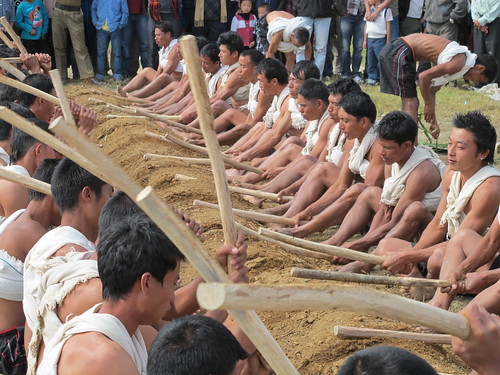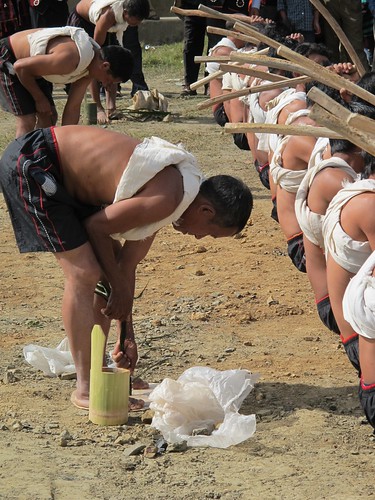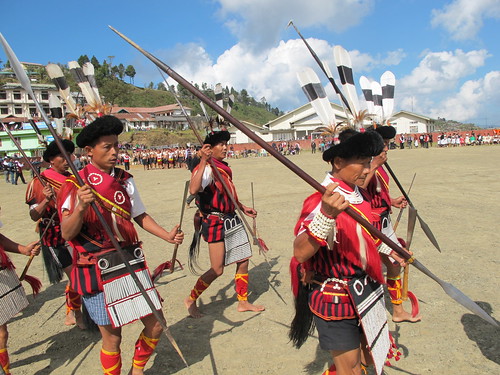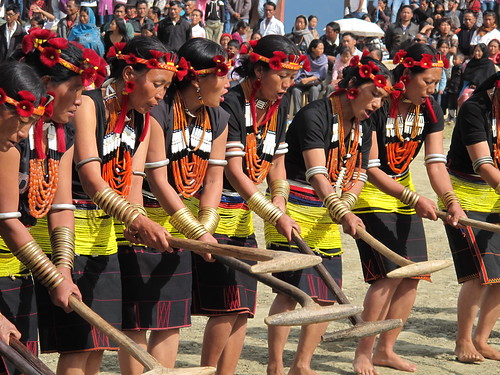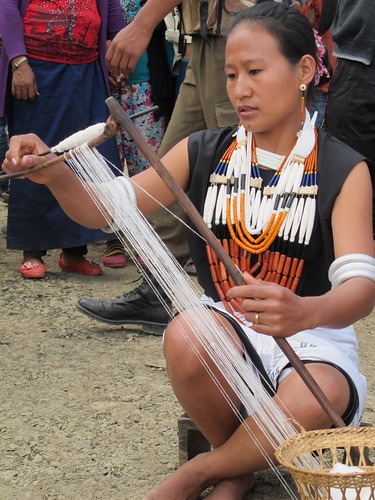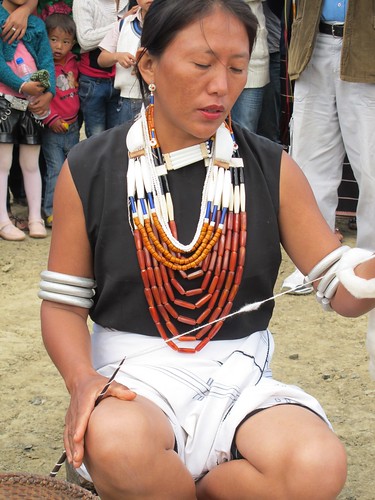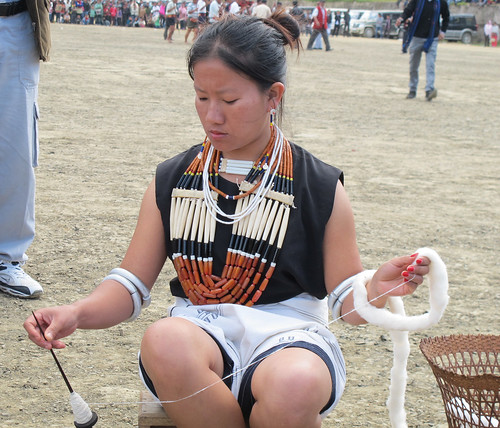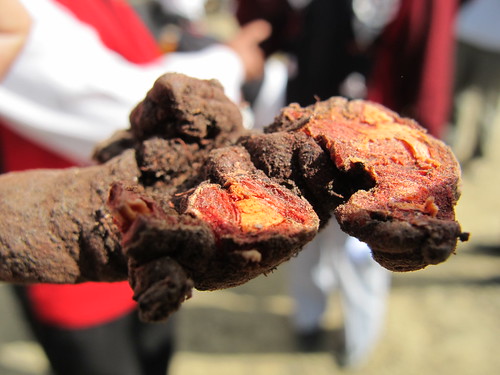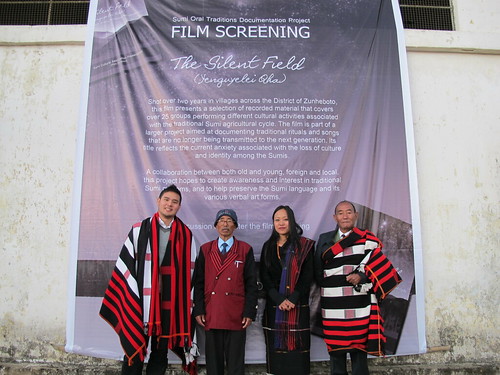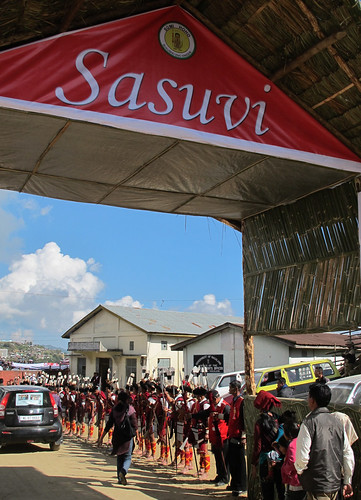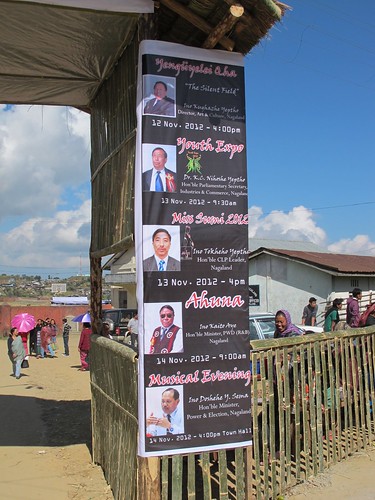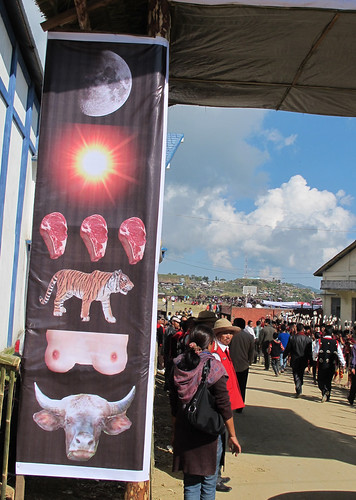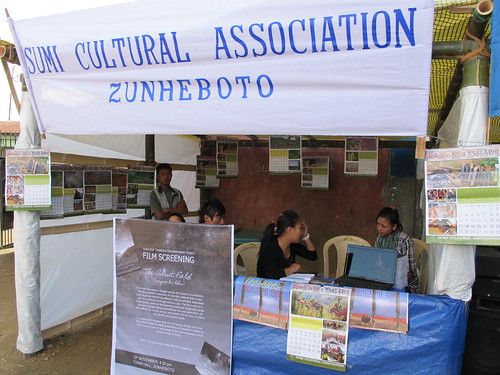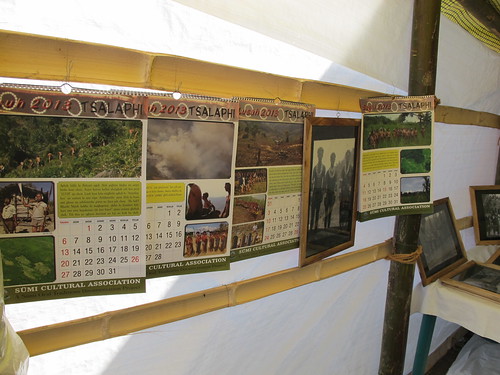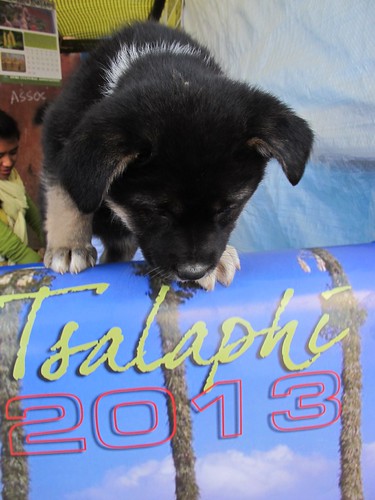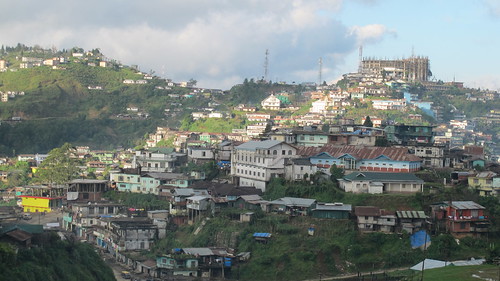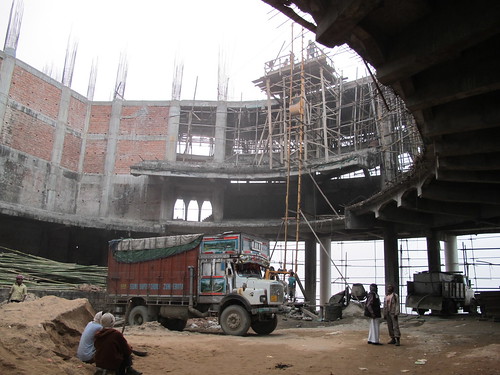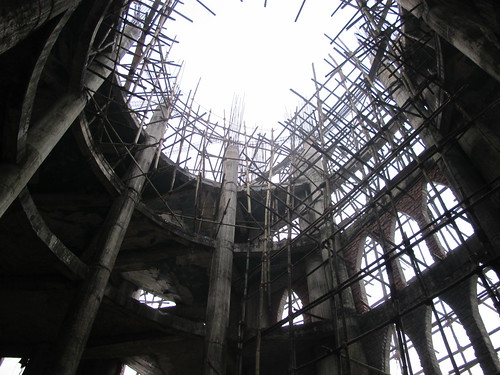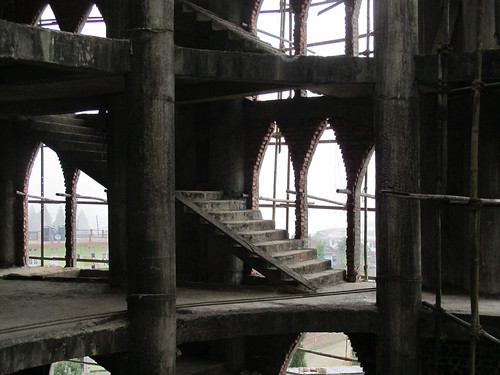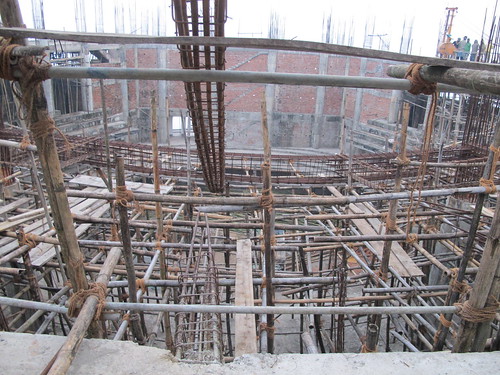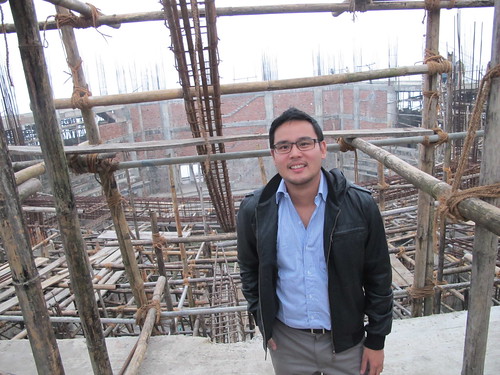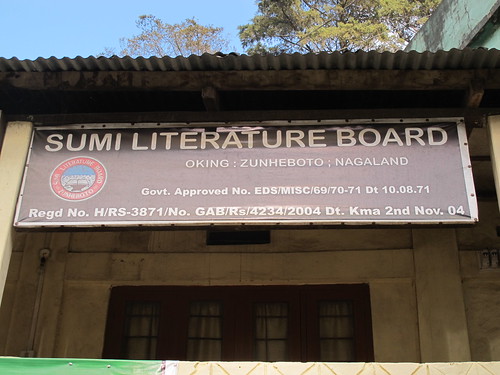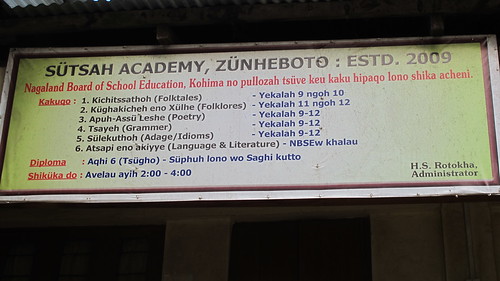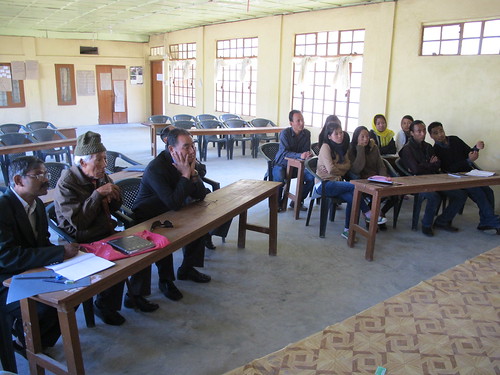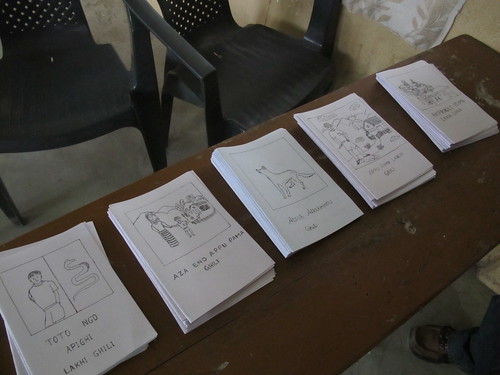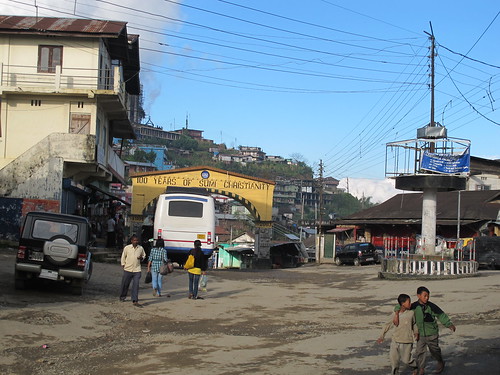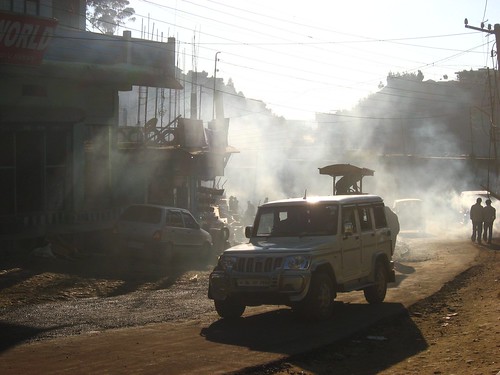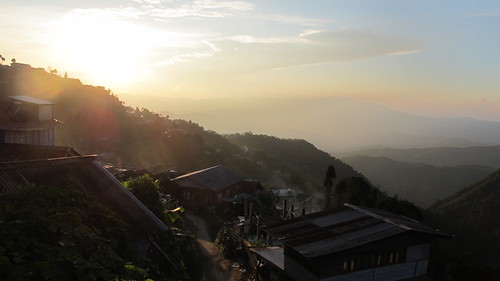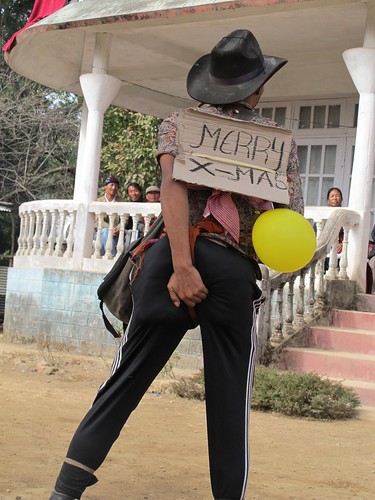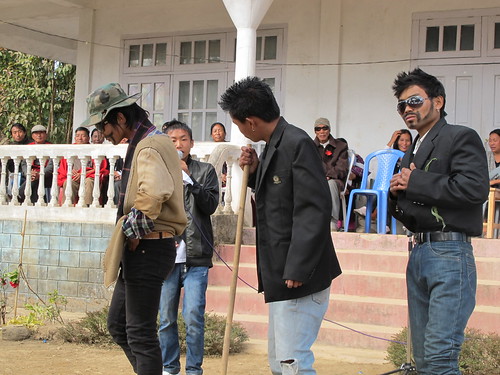The final performance at last week's Ahuna festival in Zunheboto was by the boys from North Point Colony, Zunheboto. They performed the game/dance called Imu no pi 'süjo süjo', which translates as 'My older brother said 'sujo sujo'.' The word süjo is a verb meaning 'to pull out'.
Here are some photos and videos of the game.
One guy has a 'tiger's tail' attached to his behind.
Despite the fact that it's quite a famous game here, I'd never actually seen it before. I tried asking friends about the rules of the game, but no one could really tell me what they were.
A few days later, I asked H. S. Rotokha what the significance of the game was. He told me that there was once a man who had three sons. When the man was about to die, he called his sons together to tell them not to fight among each other after his death, lest their enemies take advantage of this.
Unfortunately, at this point in our conversation, dinner was ready and he had to stop the explanation.
So now, I'm still pretty clueless as to the rules of the game, or its cultural significance. Perhaps someone who comes across this blog post can explain it to me?
With that said, I hope everyone had a happy Ahuna!
My only disappointment was that I didn't get to eat any ahuna, i.e. the newly harvested rice cooked in a bamboo vessel (read here)!
Here are some photos and videos of the game.
One guy has a 'tiger's tail' attached to his behind.
A few days later, I asked H. S. Rotokha what the significance of the game was. He told me that there was once a man who had three sons. When the man was about to die, he called his sons together to tell them not to fight among each other after his death, lest their enemies take advantage of this.
Unfortunately, at this point in our conversation, dinner was ready and he had to stop the explanation.
So now, I'm still pretty clueless as to the rules of the game, or its cultural significance. Perhaps someone who comes across this blog post can explain it to me?
With that said, I hope everyone had a happy Ahuna!
My only disappointment was that I didn't get to eat any ahuna, i.e. the newly harvested rice cooked in a bamboo vessel (read here)!
